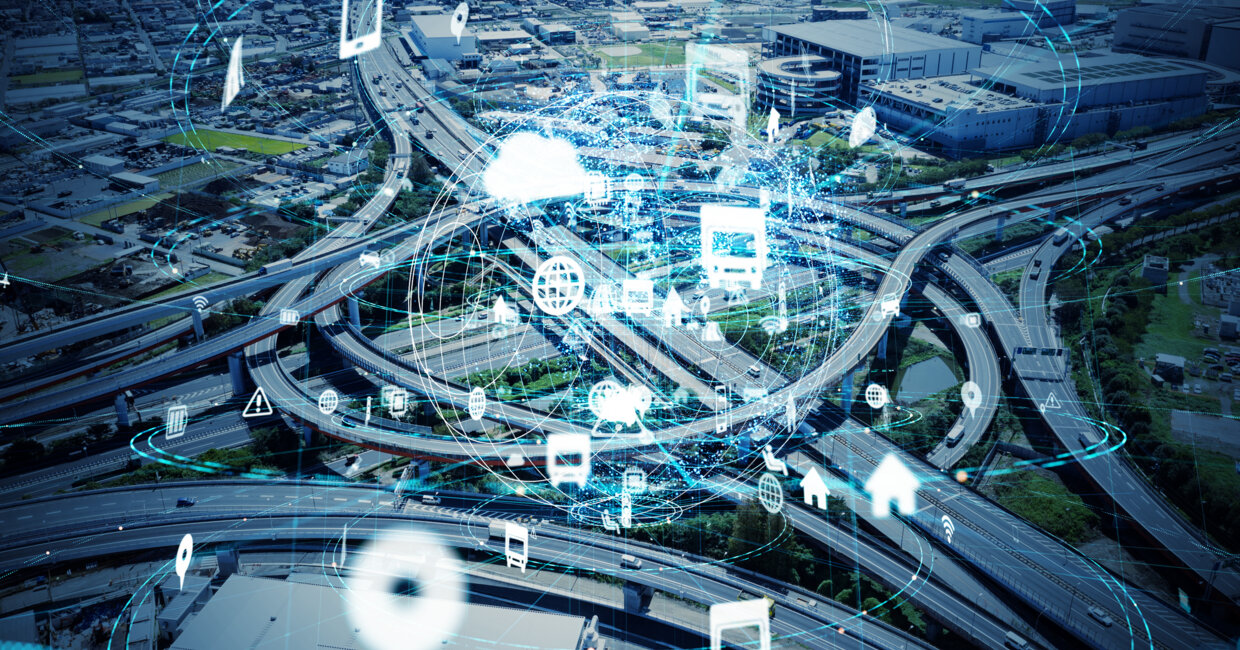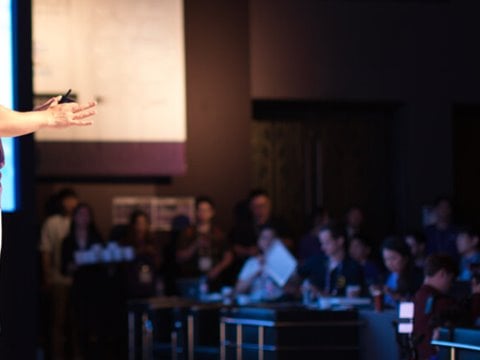
Autonomous container terminals vs. self-driving cars: differences and similarities
In recent years, the development of autonomous cars has progressed rapidly, while automation has similarly been gaining ground in the constrained environment of the container terminal. How will the development of autonomous road vehicles influence the future of terminal automation? What are the differences and similarities between the two fields?
Where we are today
At the time of writing (end of 2018), autonomous cars are still at the experimental stage. Almost always, a human is in the driver's seat, even if the car is driving autonomously. The level of automation is increasing feature by feature, but despite impressive progress in enabling technologies, we are still a long way from globally available commercial autonomous cars.
The major challenge that the developers of autonomous/self-driving cars are tackling today is the safe and consistent operation of the vehicles in the infinitely variable open environment of road traffic. In order to reach full automation, manufacturers and system designers need to address an endless range of factors ranging from differences in traffic culture, national legislation, weather conditions and road infrastructure.
Another defining aspect of automated car development is that decision-making and navigation capabilities will likely be decentralised in each individual vehicle, at least for the foreseeable future. Vehicle-to-vehicle machine communication also holds tremendous potential for boosting the safety and efficiency of both manually driven and automated cars, though the technology has not yet been adopted by the car industry.
By contrast with all of this, automated container terminals have been in production use already for over two decades. Here, the operational area is limited to a fully controlled environment in which it is relatively easy to install the specialised infrastructure required by automated container handling equipment. Unlike automated cars, the decision-making can be centralised in layers that extend from the core software of the terminal all the way to the control of the automated machines.
Industrial applications also have different safety requirements than commercial vehicles. Container terminal automation is a closed area with safe access control systems built to well-defined industrial safety standards, though development is moving towards operations in which automated and manual machines can work alongside humans. Conversely, the car industry will always need to operate in a so-called mixed mode as conventional vehicles, smart cars and people move together in open traffic.
Technology considerations
Automated container terminals already incorporate an array of proven, highly reliable technology for vehicle navigation, from satellite navigation and radar to ground-based transponders and magnets. Autonomous container handling equipment has always been – and is likely to remain – centrally controlled, even as the intelligence of the equipment increases rapidly. Though the ultimate goal is an automated system that will be able to handle any conceivable situation, remote control or teleoperation will still be needed for exception handling far into the foreseeable future.
As a high-volume mass market, the car industry operates with a very different set of core assumptions and technology development patterns. The rapid mass-market development is the major opportunity from which container terminal automation providers can benefit today and in the near future. Instead of needing to develop our own proprietary technologies from scratch, or systems based on expensive industrial components, we can adapt and reuse many of these new solutions for our own specific applications.
Arguably the single most important long-term enabler for autonomous road vehicles will be AI. The exponential improvement and affordable availability of both on-vehicle and cloud-based AI processing capacity will also open up new possibilities for centralised automated solutions in the container terminal environment.
Keeping people in the loop
In both autonomous cars and terminal automation, it is easy to get fixated on the questions of technology, and forget that in both fields, we are ultimately creating solutions to work with – and for – people. We need to embrace the concept of humanised automation , all the way from enabling safe and seamless operation of machines and people in the same area, to top-notch user experience design that ensures our systems serve our needs, and not vice versa.
It remains to be seen how much autonomous and automated operation will change the roles and value creation in the global logistics business. However, it is clear that a fully digitalised and transparent supply chain holds great promise for not only the container shipping business, but also the whole global economy.
Container terminals were among the first leaders in automated work machines, and we have been able to build extremely reliable and well-performing solutions with simpler technology in the closed environment of a container terminal. Now, we have the unique opportunity of picking the best of the new technologies being developed by the mass-market car industry, and harnessing them for our own purposes. However, due to significantly different operative business logic, our key challenge is learning to adapt and customize these capabilities to the port environment. As for what kinds of next-generation solutions we are able to create, the only limits will be in our imagination and our capability to apply these technologies in our own field.
Jari Hämäläinen, Director, Terminal Automation, Kalmar
Pekka Yli-Paunu, Director, Automation Research, Kalmar
Pertti Peussa, Principal Scientist, VTT Technical Research Centre of Finland
Read the white paper (pdf) that continues the discussion and outlines the key differences and similarities between automated container handling and self-driving cars and examines the influence that the development of autonomous road vehicles is expected to have on the future of container terminal automation.
This post has been published also in the VTT Blog.
DOWNLOADS
Related articles
Subscribe and receive updates in your email
Subscribe













